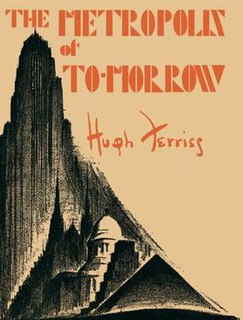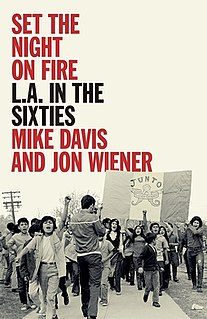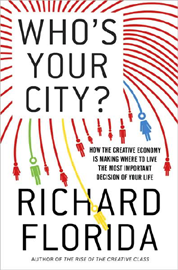 W
WBlueprint for Disaster: The Unraveling of Chicago Public Housing is a history of the public housing program in Chicago.
 W
WThe City in History: Its Origins, Its Transformations, and Its Prospects is a 1961 National Book Award winner by American historian Lewis Mumford.
 W
WCity of Quartz: Excavating the Future in Los Angeles is a 1990 book by Mike Davis examining how contemporary Los Angeles has been shaped by different powerful forces in its history. The book opens with Davis visiting the ruins of the socialist community of Llano, organized in 1914 in what is now the Antelope Valley north of Los Angeles. The community moved in 1918, leaving behind the "ghost" of an alternative future for LA.
 W
WCommunitas: Means of Livelihood and Ways of Life is a 1947 book on community and city planning by Percival and Paul Goodman. The book is divided into ‘A manual of modern plans’ reviewing the conceptual history of twentieth-century planning and ‘Three community paradigm’, a series of utopias proposing answers to the central question of the book: ‘How to find the right relations between means and ends?’
 W
WThe Country and the City is a book of cultural analysis by Raymond Williams which was first published in 1973.
 W
WThe Death and Life of Great American Cities is a 1961 book by writer and activist Jane Jacobs. The book is a critique of 1950s urban planning policy, which it holds responsible for the decline of many city neighborhoods in the United States. The book is Jacobs' best-known and most influential work.
 W
WDesign of Cities, first published in 1967, is an illustrated account of the development of urban form, written by Edmund Bacon (1910–2005), who was the Executive Director of the Philadelphia City Planning Commission from 1949 to 1970. The work looks at the many aspects that influence city design, including spatial form, interactions between humans, nature and the built environment, perception of favorable environments, color, and perspective. Bacon also explores the growth of cities from early Greek and Roman times to Philadelphia's design in the 1960s. It is considered a seminal text on urban planning.
 W
WEcology of Fear: Los Angeles and the Imagination of Disaster is a 1998 book by Mike Davis examining how contemporary Los Angeles is portrayed in the popular media.
 W
WGarden Cities of To-morrow is a book by the British urban planner Ebenezer Howard. When it was published in 1898, the book was titled To-morrow: A Peaceful Path to Real Reform. In 1902 it was reprinted as Garden Cities of To-Morrow. The book gave rise to the garden city movement and is very important in the field of urban design
 W
WThe Geography of Nowhere: The Rise and Decline of America's Man-Made Landscape is a book written in 1993 by James Howard Kunstler exploring the effects of suburban sprawl, civil planning, and the automobile on American society and is an attempt to discover how and why suburbia has ceased to be a credible human habitat, and what society might do about it. Kunstler proposes that by reviving civic art and civic life, we will rediscover public virtue and a new vision of the common good: "The future will require us to build better places," Kunstler says, "or the future will belong to other people in other societies."
 W
WA Guide to the New Ruins of Great Britain is a book by the British writer Owen Hatherley, published by Verso Books in November 2010. The book is a critique of the architecture and urbanism of postmodern Britain, taking the form of a tour of British cities.
 W
WHappy City: Transforming Our Lives Through Urban Design is a 2013 book written by the Canadian author Charles Montgomery. Gathering insights from the disciplines of psychology, neuroscience, urban planning and Montgomery’s own social experiments, the book makes the case that the manner in which we build our cities alters the way in which we feel, think, and behave as individuals and as a society. Montgomery argues that the happy city, the green city, and the low-carbon city are the same place, and we can all help build it.
 W
WThe High Cost of Free Parking is a non-fiction urban planning book by UCLA professor Donald Shoup. It deals with the costs of free parking policies on society. It is structured as a criticism of how parking is planned and regulated, especially the use of parking minimums and off-street parking requirements. It is influenced by Shoup's Georgist philosophy and recommends that parking be built and allocated according to its fair market value. It was originally published in 2005 by the American Planning Association and the Planners Press and a revised edition was released in 2011 also published by Routledge.
 W
WThe Image of the City is a 1960 book by American urban theorist Kevin Lynch. The book is the result of a five-year study of Boston, Jersey City and Los Angeles on how observers take in information of the city, and use it to make mental maps. Lynch's conclusion was that people formed mental maps of their surroundings consisting of five basic elements.
 W
WLeadville is a book by English writer Edward Platt, published in 2000 by Picador. It won both the John Llewellyn Rhys Prize and the Somerset Maugham Award. Cambridge History of Science lecturer Patricia Fara selected it as one of her books of the decade.
 W
WThe Metropolis of Tomorrow is a 1929 book written and illustrated by Hugh Ferriss. Prominently featuring 60 of Ferriss' drawings, the book is divided into three sections. The first, "Cities of Today", underscores the lack of planning in contemporary cities and the powerful psychological impact that cities have on their inhabitants while also profiling 18 influential modern buildings in five cities. The second section, "Projected Trends", prominently discusses practical concerns related to population density and traffic congestion, demonstrates Ferriss' adherence to some of the key elements of modern architecture, and then analyzes projected trends in urban design that he supports, as well as a few that he opposes. The third and final section, "An Imaginary Metropolis", describes an ideal future city complete with towering skyscrapers spaced well apart from each other, broad avenues, and a strongly geometric city layout based around centers and sub-centers of buildings that are segregated by function.
 W
WThe Modernist City: An Anthropological Critique of Brasilia is a book by anthropologist James Holston published by the University of Chicago Press in 1989.
 W
WNo Land! No House! No Vote! Voices from Symphony Way is an anthology published in 2011 of 45 factual tales written and edited by the Symphony Way Pavement Dwellers.
 W
WThe Origins of the Urban Crisis: Race and Inequality in Postwar Detroit is the first book by historian and Detroit native Thomas J. Sugrue in which he examines the role race, housing, job discrimination, and capital flight played in the decline of Detroit. Sugrue argues that the decline of Detroit began long before the 1967 race riot. Sugrue argues that institutionalized and often legalized racism resulted in sharply limited opportunities for African Americans in Detroit for most of the 20th century. He also argues that the process of deindustrialization, the flight of investment and jobs from the city, began in the 1950s as employers moved to suburban areas and small towns and also introduced new labor-saving technologies. The book has won multiple awards including a Bancroft Prize in 1998.
 W
WA Pattern Language: Towns, Buildings, Construction is a 1977 book on architecture, urban design, and community livability. It was authored by Christopher Alexander, Sara Ishikawa and Murray Silverstein of the Center for Environmental Structure of Berkeley, California, with writing credits also to Max Jacobson, Ingrid Fiksdahl-King and Shlomo Angel. Decades after its publication, it is still one of the best-selling books on architecture.
 W
WThe Power Broker: Robert Moses and the Fall of New York is a 1974 biography of Robert Moses by Robert Caro. The book focuses on the creation and use of power in local and state politics, as witnessed through Moses' use of unelected positions to design and implement dozens of highways and bridges, sometimes at great cost to the communities he nominally served. It has been repeatedly named one of the best biographies of the 20th century, and has been highly influential on city planners and politicians throughout the United States. The book won a Pulitzer Prize in 1974.
 W
WCantieri Romani – Roman construction sites is a publication that accompanies the exhibition of the same name held in 2001 at the Galleria Comunale d'Arte Moderna e Contemporanea of Rome.
 W
WSet the Night on Fire: L.A. in the Sixties is a best-selling book by Mike Davis and Jon Wiener about Los Angeles in the 1960s. The authors combine archival research and personal interviews with their own experiences in the civil rights and anti-war movements to tell the social history or, as the authors term it, "movement history" of this transformative decade. The book's purpose is not to present a comprehensive history of 1960s Los Angeles but to dispel the mythology surrounding this era and replace it with the neglected history of the populist social and cultural movements that shifted power away from an entrenched elite and opened up opportunities for radical egalitarian change.
 W
WStreetlife: The Untold History of Europe's Twentieth Century is a 2011 book by the British academic Leif Jerram.
 W
WTimes Square Red, Times Square Blue is a non-fiction book written by science fiction author Samuel R. Delany and published in 1999 by the New York University Press. The book is a compilation of two separate essays: Times Square Blue and ...Three, Two, One, Contact: Times Square Red. The 20th Anniversary Edition, published in 2019, contains an introduction by Robert Reid-Pharr.
 W
WWeird City: Sense of Place and Creative Resistance in Austin, Texas is a non-fiction scholarly text by Joshua Long published in 2010 by University of Texas Press. The book uses the "Keep Austin Weird" movement as a central focus to discuss the social, cultural and economic changes occurring in Austin, Texas, at the beginning of the 21st century. Largely written from a human geography perspective, Weird City is intended to show the relationship between sense of place and urban economies, the environment, and the urban cultural landscape.
 W
WWho's Your City?: How the Creative Economy Is Making Where You Live the Most Important Decision of Your Life is a non-fiction book written by Richard Florida. The book advances Florida's previous work on the locational choices of people and businesses. He adds a dimension of environmental psychology by assigning psychological profiles to urban regions according to the dominant personality traits of the people who live there. For example, the New York metropolitan area and the ChiPitts area have the highest concentration in the United States of people whose dominant personality trait is neuroticism. The book ends with a ten step guide to choosing a location best suited to the reader's personality and life situation.